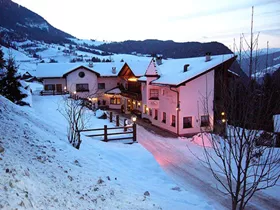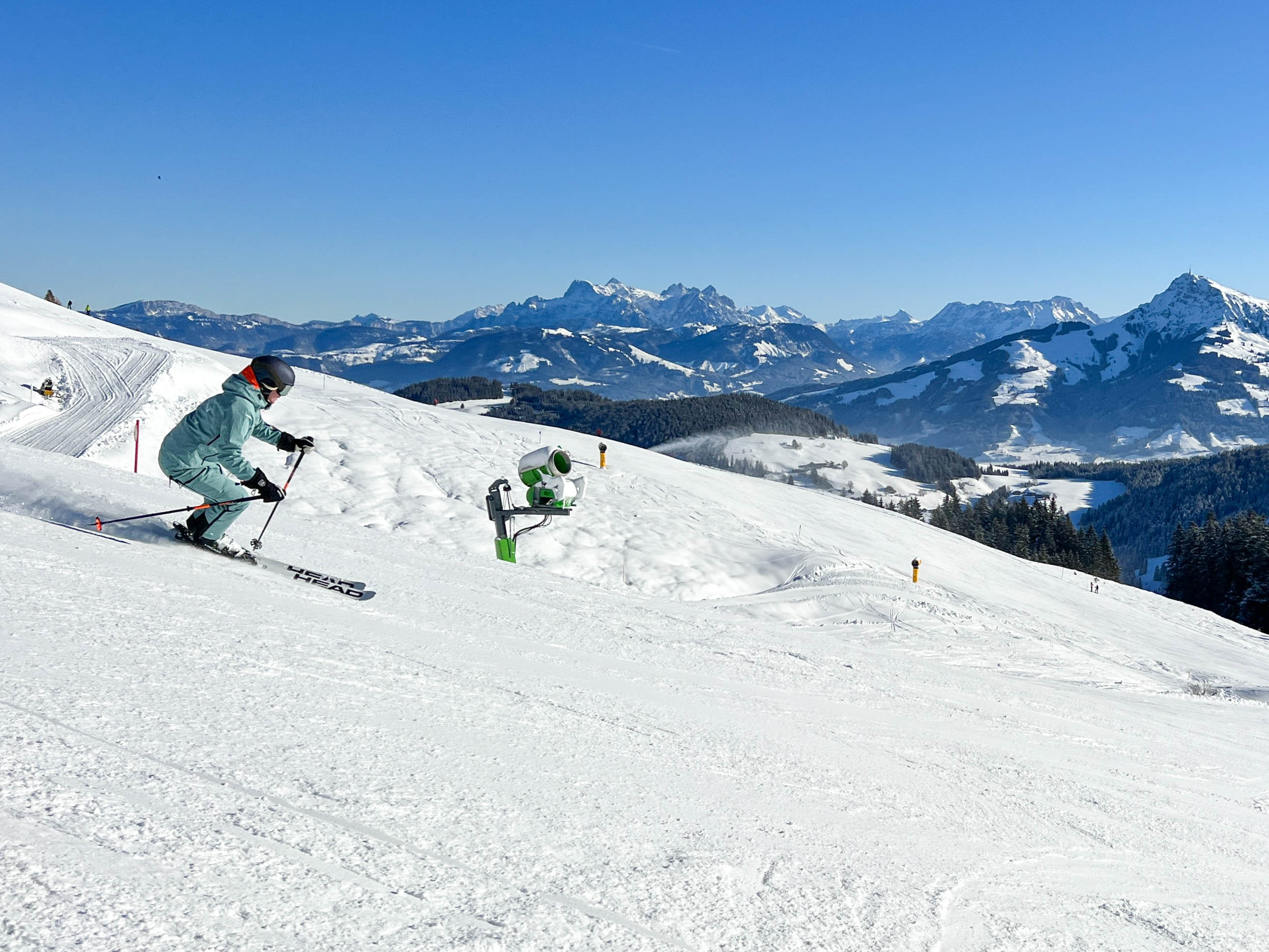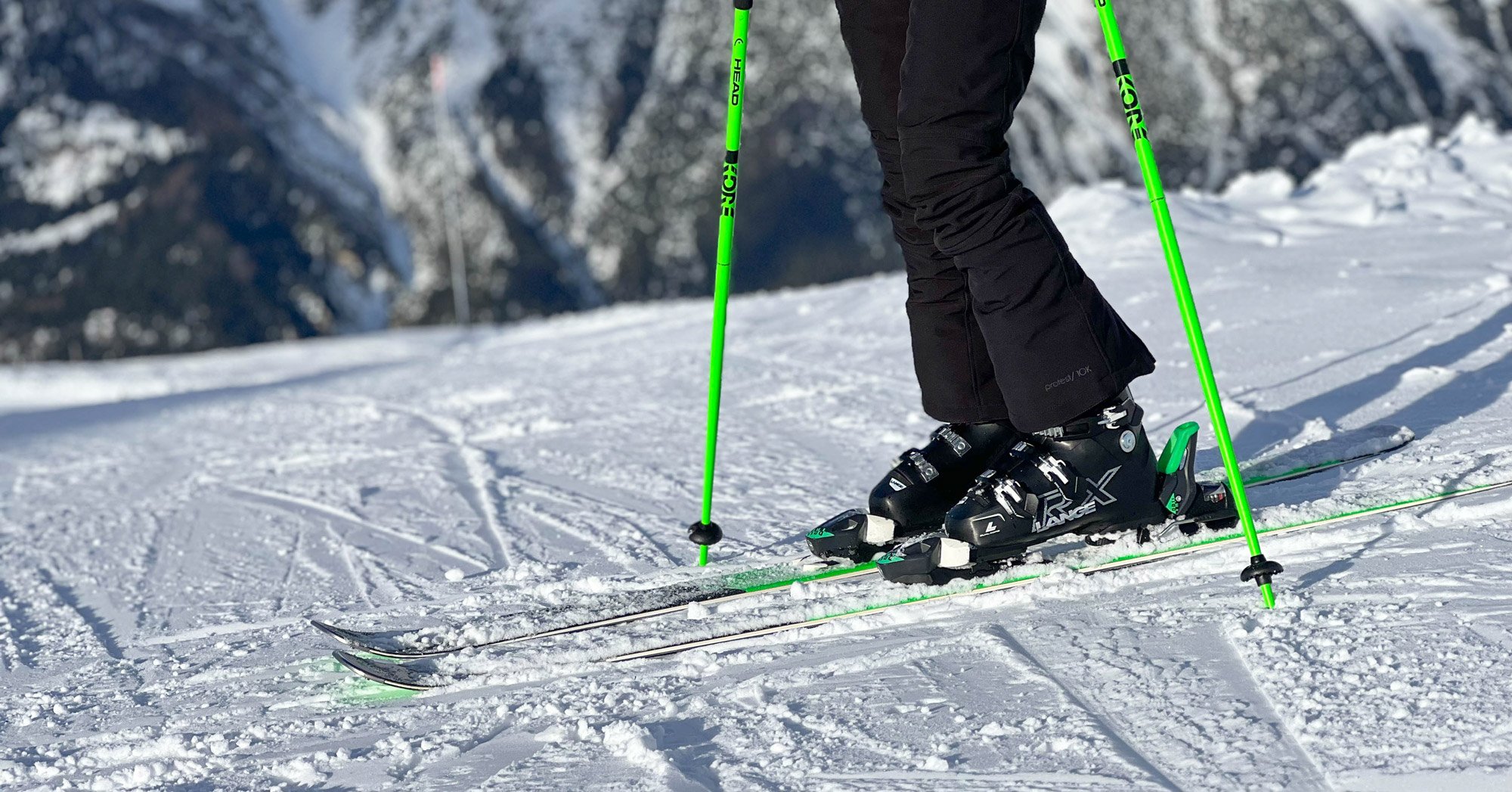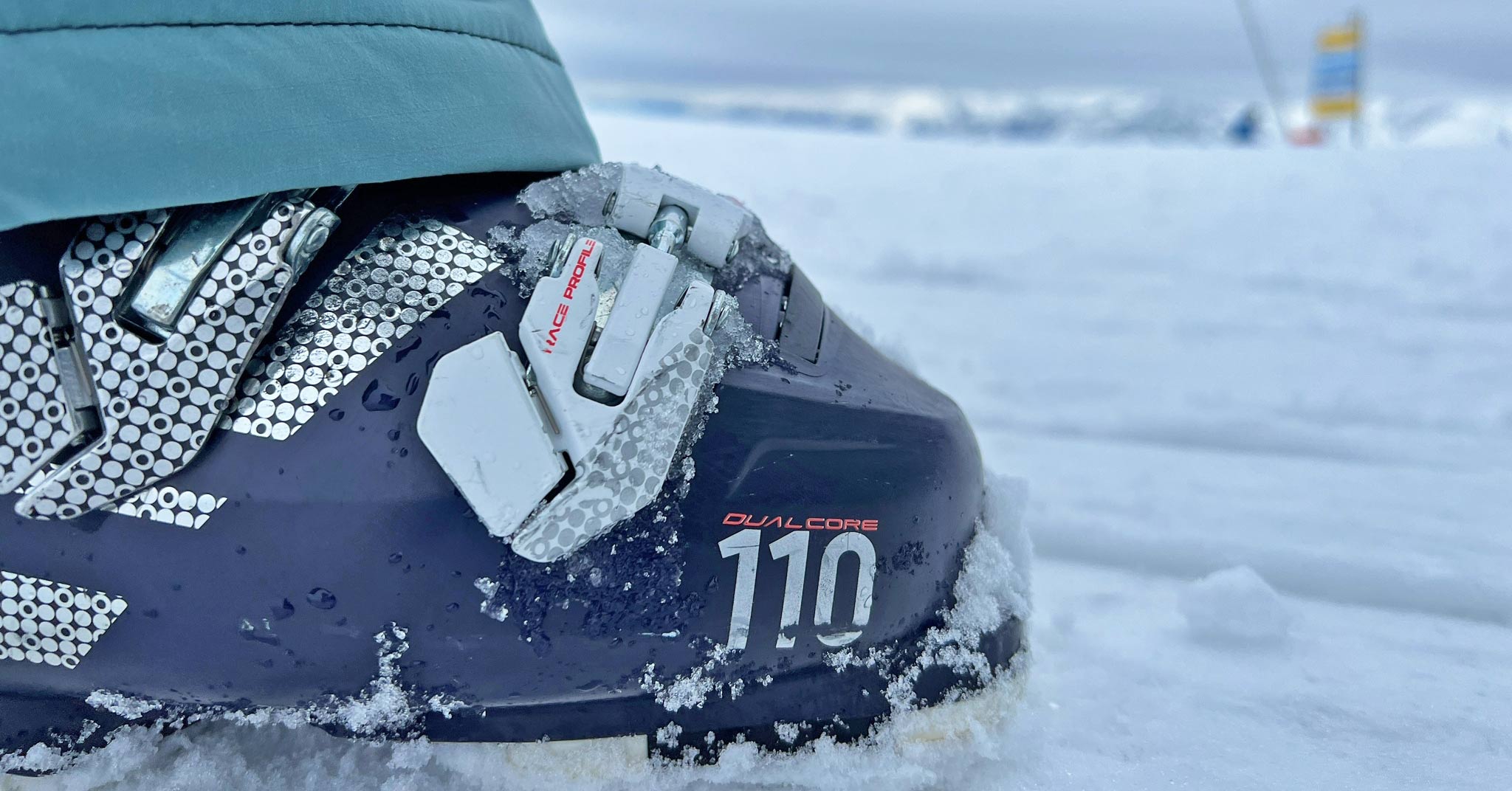

Whether you are ready for a new pair of ski boots or want to buy your own for the first time, finding out more before you go to the shop is always helpful. Ask yourself a few key questions beforehand to provide the salesperson with the correct information as they help you find the best ski boots for your feet. Are you in the market for some new ski boots? This article lists the most essential tips and facts and shares the most common mistakes.
Good ski boots: a worthwhile investment
Ski boots are the most important part of your ski equipment. They ensure the transmission of your movements to the skis. Well-fitting ski boots are essential as they increase your skiing pleasure and control of the skis. Conversely, ill-fitting ski boots can cause painful or cold feet and hamper your skiing technique. In short, buying new ski boots is often a significant investment but well worth it.

A ski boot is not a slipper
Your feet comprise 26 bones, 33 joints and 19 muscles and tendons. Putting these complicated extremities in hard plastic shoes that have to control your skis will never feel as comfortable as wearing slippers. But painful feet while skiing are unwanted and, on the whole unnecessary. Although a larger ski boot is often much more comfortable, it is unsuitable for skiing. And it makes you ski less well. So a ski boot must fit snugly around your foot, like a firm handshake, so that your movements are properly transferred to your skis, and you have optimal control.
Properties of a ski boot
Ski boots come in different shapes and sizes. And while you may not see many distinctions at first, they feature different properties. Depending on the ski boots' characteristics, they are suitable for a particular skiing level or terrain (on-piste/off-piste). For example, there are super stiff and narrow racing shoes and all-mountain shoes with more comfort, cushioning and a hike stand. The flex indicates a ski boot's stiffness, where flex varies from brand to brand. Generally, as a beginner, you will choose a shoe with lower flex and more comfort. In contrast, a sporty skier who skis with more power will prefer a stiffer shoe.

What type of skier are you?
In order to find the right ski boot for you, it is important to answer some questions:
- What is your skiing level? And be honest about it! Don't overestimate or underestimate yourself. Alternatively, you might bring a short ski video to the shop to show your level.
- Where do you like to ski the most? On-piste or off-piste, and on what colour runs?
- How do you prefer to ski? Are you a speed freak, or are you more of a relaxed skier?
- What (type of) skis do you ski on? Ideally, your ski boot fits well with your type of ski.

Buying ski boots in 4 simple steps
Once you've answered the questions above, it's time to head to the shop. Choose a specialised winter sports shop, where they can properly help you find the best ski boot for you. This is done in four simple steps:
- Get a 3D foot scan. This scan will provide your size and the width and height of your feet. With this information, the salesperson can pick out some boots for you.
- Try on some ski boots. Try two to three pairs of boots so you can feel the difference yourself and discover which ones are ideal for you.
- Check the insole. Most standard insoles in ski boots are flat and provide little or no support. Depending on the visible pressure points on the scan, the salesperson can recommend an insole that provides stabilisation, support and comfort. Also, choose some suitable winter sports socks.
- During the final step, if necessary, your new shoes will be completely adjusted to your feet by so-called boot fitting. This includes heating your inner boots to fit perfectly and remedying any pressure points. You can also choose to ski for a few days first and then see whether adjustments are needed to the inner shoe or shell. However, not every shoe is suitable for boot fitting, and not all shops provide this service.

Most common mistakes
Buying ski boots is a precise job, and some things can still go wrong. These are the most common mistakes:
- Ski boots that are too big
- Relying on looks or price alone
- Boots that are either too stiff or show too much flex
- Fitting with the wrong socks
- Not being honest about your skiing level
- Forgetting to cut your toenails
- Buy ski boots online or second-hand
- Shoes that do not match your skis
Tips when buying ski boots
Here are some final tips when you are looking to buy new ski boots:
- Visit a specialised shop with experienced and knowledgeable staff.
- Take plenty of time when shopping for ski boots; try to avoid busy Saturdays and late-night opening hours.
- Put on comfortable clothes, as all the fitting will make you hot. Make sure you can easily roll up your trousers to the knee.
- Bring your own ski socks when you go for a fitting.
- Feel free to wear the pair of ski boots that fits best and get into the skiing position. Walking around the store in them is nonsense: you don't do this while skiing.















